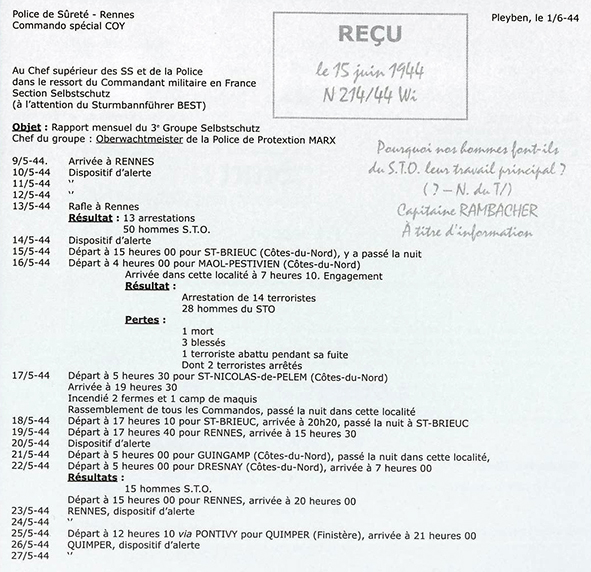Selbstschutzpolizei : collaborators in the police

In Vichy at the beginning of January 1944, the Germans promoted Joseph Darnand, head of the Milice (militia), to the post of secretary general responsible for keeping order. With the Allied landings expected at any time, and Pétain having lost the occupier's confidence, radicalisation was the order of the day with this appointment of an unconditional collaborator.
An auxiliary police force consisting of unconditional collaborators
Joseph Darnand, the new strongman, took charge of all the police forces: national police, gendarmerie, garde-mobile, mobile reserve groups, the Paris Prefecture of Police, fire services, transport police, prison services and special police. Milice men were appointed to several key posts in the system of repression in France.
At the same time, the German services did not forget the armed role that could be played by collaborationist parties, which had wanted to take action for months. So even as they gave Darnand the reins of the French police, the heads of the Nazi police services in Paris intended to create a new paramilitary force under German command, the Selbstschutzpolizei (”self-protection police”), officially directed ”against Bolshevism”, to be made up of members of collaborationist parties.
The heads of the main parties concerned (Rassemblement national populaire, Parti populaire français, Mouvement social révolutionnaire) thus took part in a conference in Paris on 9 November 1943 with the heads of the Nazi police services. As the minutes report, the goal was to create an ”auxiliary police force in the event of a landing” to fight ”terrorists”, conduct surveillance missions and protect supply depots. The Germans also expected another benefit: ”these men can serve as activists […] in their workplaces. In this way we hope to promote an increase in political awareness among the collaborators.” The head of the SIPO-SD in Paris (Sicherheitspolizei und Sicherheitsdienst, the state security police and the Nazi Party's security services) would take charge of ”political” training and the gathering of intelligence, while the head of the German public order police would take care of ”technical” training and logistics - including automatic weapons, which had so far been refused to the French police. On 13 November, the idea was approved at a meeting in the offices of Karl Oberg, the head of the Nazi police services in occupied France. On 24 November, the German military command in Paris gave its consent and made the Château de Vaucelles in Taverny, north-west of Paris, available for training new recruits.
Karl Oberg's text making this Selbstschutzpolizei official was not issued until 12 February 1944 (see slideshow). It states that the purpose of the force is to enable ”members of authorised French parties in the occupied zone and French citizens who are not members of a party to intervene to preserve calm and order alongside the German and French police and to undertake special missions in the event of internal disruption or an attack against France”.
A limited but damaging force
Enlistment in the Selbstschutz was different from that of the Milice. Its members were appointed by the Nazi police services and provided with an Ausweis (see slideshow). But as a senior Nazi police officer observed at the end of March 1944, despite the good will shown, ”the value of the human potential remains moderate. Convinced activists constitute the majority, but there are still many opportunists. The unfit and uncertain have been eliminated during training.” In addition, not all the collaborationist parties sent men, mainly because they were not in a position to present serious candidates. None served as senior officers during training: ”the difficulties of equipment and arms encountered during the training were and remain considerable,” concluded the German commander.
Consequently, although the initial plan had been to train 150 people at Taverny for allocation to the capital, together with several groups of 50 to be sent to France's regions, the first units were not operational until May 1944 in the regions of Rennes, Toulouse, Dijon and Chaumont, all with teams of only about fifteen men led by a German officer.
But these units still operated and dealt blows to the Resistance. As stated in a German police report of 1 June, the unit that arrived in Rennes on 9 May was in action four days later and proceeded to make about sixty arrests of people resisting forced labour (see slideshow). On 16 May, fourteen ”terrorists” were apprehended during fighting that killed a Selbstschutz member. During the days that followed, the unit was used for guard work and to carry out several roadside checks.
Altogether, although the numbers and effectiveness of these collaborationist party members may appear small, they were highly symbolic: they fought voluntarily in France on behalf of Germany, even though the liberation of the country had already begun.
Thomas Fontaine
Historian, research associate at the Twentieth-Century History Centre, Paris 1
FOR MORE INFORMATION
The archives relating to the Selbstschutzpolizei will be classified under sub-series GR 28 P 8 (German archives).
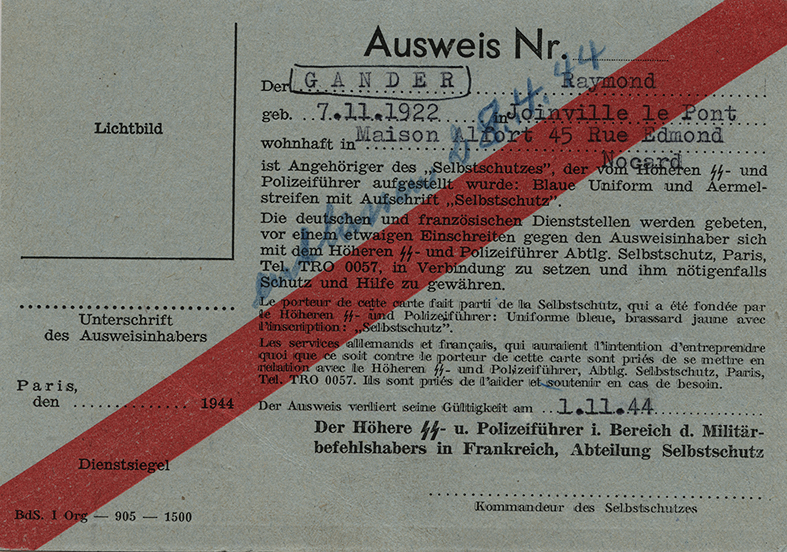
Ausweis d'un membre de la Selbstschutzpolizei, 1944.
© SHD
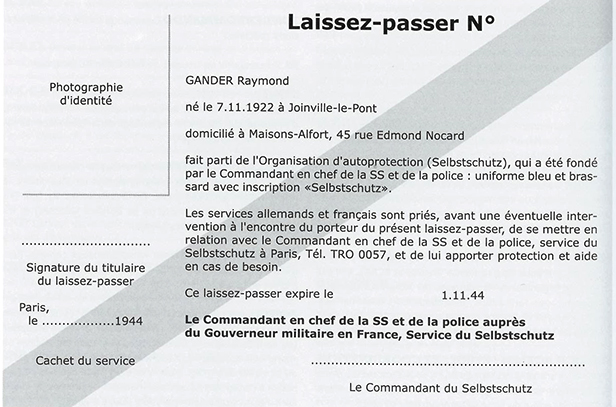
Ausweis d'un membre de la Selbstschutzpolizei, 1944 (traduction).
© SHD
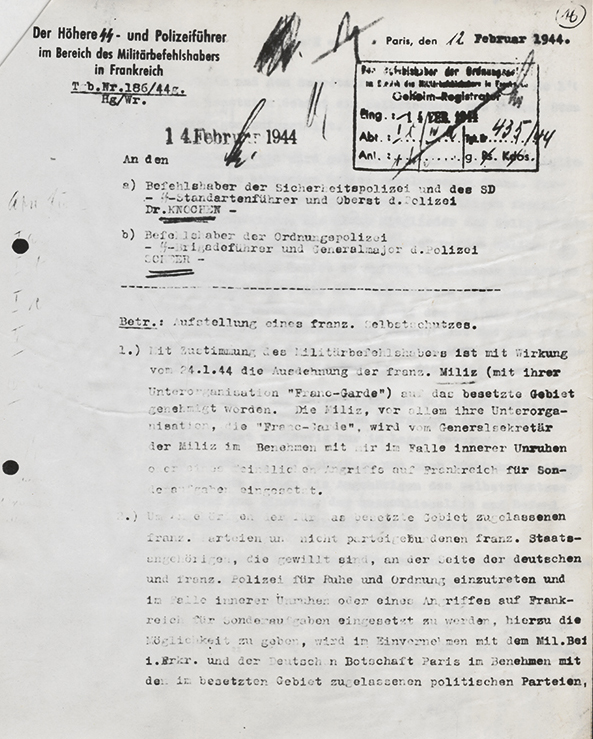
Lettre de Karl Oberg sur la mise en place d'un corps d'autodéfense français, 12 février 1944 (extrait).
© SHD
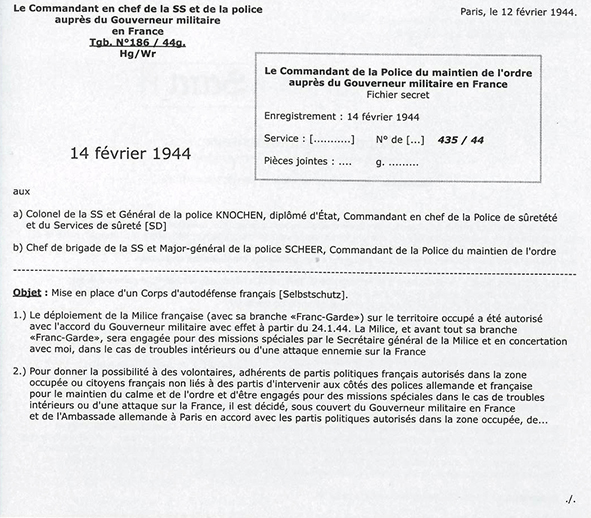
Lettre de Karl Oberg sur la mise en place d'un corps d'autodéfense français, 12 février 1944 (extrait-traduction).
© SHD
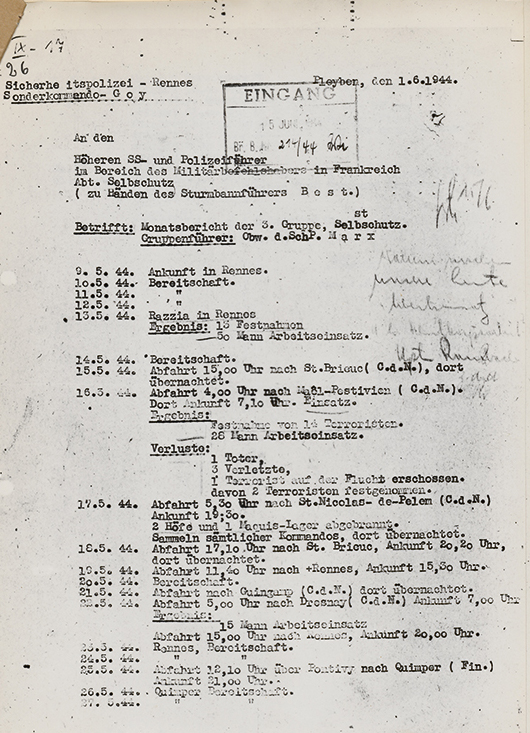
Rapport mensuel du 3e groupe (Selbstschutz) du SD de Rennes, 1er juin 1944, p. 1.
© SHD
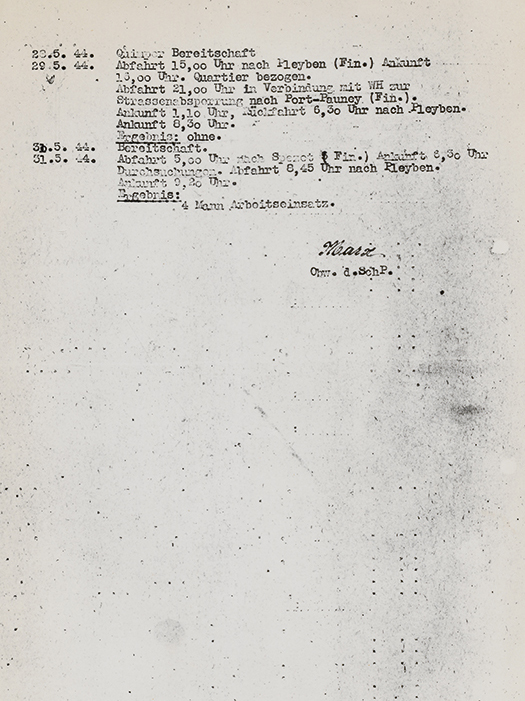
Rapport mensuel du 3e groupe (Selbstschutz) du SD de Rennes, 1er juin 1944, p. 2.
© SHD
